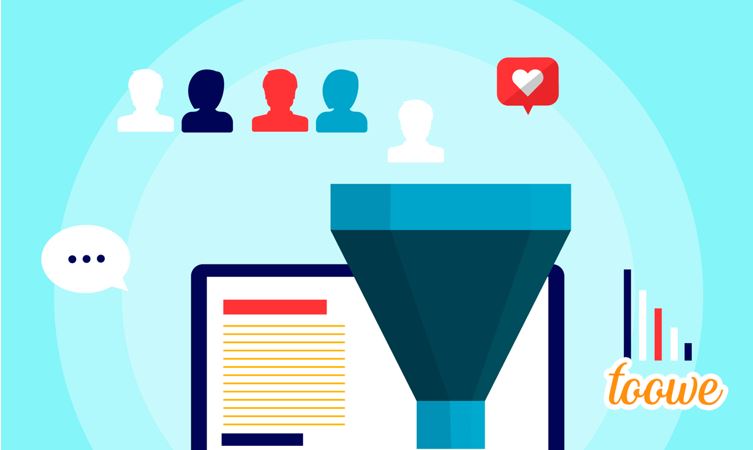In the digital era, having a professionally designed website is vital for any corporation, such as the one serving people with disabilities under the National Disability Insurance Scheme (NDIS). Choosing the proper web design agency in Australia is crucial for these entities to ensure accessibility, capability, and powerful verbal exchange through their online presence. This complete guide gives 19 hints critical to selecting the fine internet layout organization in Australia, with a consciousness chosen on organizations proficient in NDIS website design.
Understanding the Importance of Web Design in Australia
- Recognize the Role of Your Website: Your website often serves as the first point of interaction with your target market. For NDIS provider carriers, it’s not only an advertising tool but a platform to assist, tell, and connect to people with disabilities, their families, and caregivers.
- Compliance and Accessibility: In Australia, internet accessibility is not just moral but also a legal requirement, particularly for services associated with the NDIS. Websites should comply with WCAG (Web Content Accessibility Guidelines) to ensure they may be available to all users, irrespective of their abilities.
Tips on Choosing the Best Web Design Agency
Establishing Your Needs
- Define Your Objectives: Clearly outline what you want your internet site to accomplish. For NDIS vendors, targets would possibly include service descriptions, resources for disabilities, consumer registration for offerings, and compliance with accessibility standards.
- Assess Their Expertise in Accessibility: Check if the enterprise has revelled in creating websites compliant with WCAG 2.1 requirements, which is essential for NDIS-associated websites.
Evaluating Potential Agencies
- Look at Their Portfolio: Evaluate the agency’s past tasks to see if they have efficiently built websites for fitness or disability services sectors.
- Check Client Testimonials and Reviews: Look for remarks from previous customers to gauge the business enterprise’s popularity and reliability.
- Verify Their Technical Skills: Ensure the corporation uses up-to-date technology that enhances website accessibility and consumer experience.
- Consider Their Approach to Search Engine Optimization: Your website desires to be easily determined by those looking for NDIS facts and offerings. Check if the agency has strong search engine marketing techniques.
- Assess Their Understanding of NDIS: The organization needs to have a great know-how of the NDIS and its components to ensure they can carry your messages as they should and empathetically.
Cost Considerations
- Get Detailed Quotes: Ask for itemized charges to recognize what you are paying for, ensuring there aren’t hidden costs.
- Compare Pricing: While affordability is vital, the cheapest alternative may not always be exceptional in greatness and compliance with accessibility requirements.
Collaboration and Support
- Check for Flexibility and Responsiveness: The company must be responsive to your needs and flexible with their method, especially while updates or adjustments are to be made up-release.
- Ensure They Offer Ongoing Support: A post-release guide is essential for maintaining the capability and accessibility of the website.
- Communication: Opt for an organization that communicates genuinely and frequently, ensuring you are kept in the loop in the layout technique at some stage.
Special Considerations for NDIS Website Design
- Incorporate User Feedback: Engage with actual NDIS participants to get remarks on website design and capability, which may be communicated to the design company.
- Training on Content Management: Ensure the business enterprise provides education on controlling the internet site’s content to keep it cutting-edge and relevant while not having consistent developer intervention.
- Security Measures: As NDIS websites may take care of sensitive data, verify the corporation’s functionality to enforce strong security protocols.
- Future-Proofing the Website: The business enterprise must design the website with scalability, considering smooth updates and diversifications as your enterprise evolves.
- Portfolio of Inclusive Design: Check if the agency has a sturdy portfolio in inclusive design that now not only meets technical accessibility standards but is also familiar with the realistic elements of usability for people with various disabilities.
Focusing on Analytics and Optimization
Measuring Performance and Enhancing Usability
- Website Analytics: Discuss how regular analysis of user behaviour on the website can help identify areas for improvement, ensuring that the website continues to meet the needs of its users effectively.
- A/B Testing: Explain the process of A/B testing different versions of web pages to determine which designs and functionalities best meet the needs of NDIS participants.
- Continuous Improvement Cycle: Emphasize the importance of ongoing website assessment and enhancements based on user feedback and evolving web standards to ensure the site remains effective and compliant.
Focusing on Analytics and Optimization
Measuring Performance and Enhancing Usability
Website Analytics: Discuss how regular analysis of user behavior on the website can help identify areas for improvement, ensuring that the website continues to meet the needs of its users effectively.
A/B Testing: Explain the process of A/B testing different versions of web pages to determine which designs and functionalities best meet the needs of NDIS participants.
Continuous Improvement Cycle: Emphasize the importance of ongoing website assessment and enhancements based on user feedback and evolving web standards to ensure the site remains effective and compliant.
Integration with NDIS Goals and Services
Aligning Web Design with NDIS Objectives
Consistency with NDIS Branding: Ensure that the website reflects the NDIS branding guidelines, creating a consistent experience that reinforces trust and reliability.
Integration with NDIS Portal: Discuss the potential for integrating the website with the NDIS participant portal for seamless service experiences, such as direct appointment bookings or service inquiries.
Educational Resources: Highlight the importance of including educational materials about NDIS services and disability rights, which can provide valuable information to participants and caregivers alike.
Integration with NDIS Goals and Services
Aligning Web Design with NDIS Objectives
- Consistency with NDIS Branding: Ensure that the website reflects the NDIS branding guidelines, creating a consistent experience reinforcing trust and reliability.
- Integration with NDIS Portal: Discuss the potential for integrating the website with the NDIS participant portal for seamless service experiences, such as direct appointment bookings or service inquiries.
- Educational Resources: Highlight the importance of including educational materials about NDIS services and disability rights, which can provide valuable information to participants and caregivers alike.
Conclusion
Selecting the right web layout is important for any organization, especially one worried about Naboutin Australia. These 19 recommendations provide a complete framework to evaluate capability companies, ensuring that your website no longer best meets criminal and ethical requirements for accessibility but also efficiently serves your network’s needs. By carefully choosing an accomplice familiar with and aligning with your goals, you can create an effective online presence that supports and engages your target audience.










